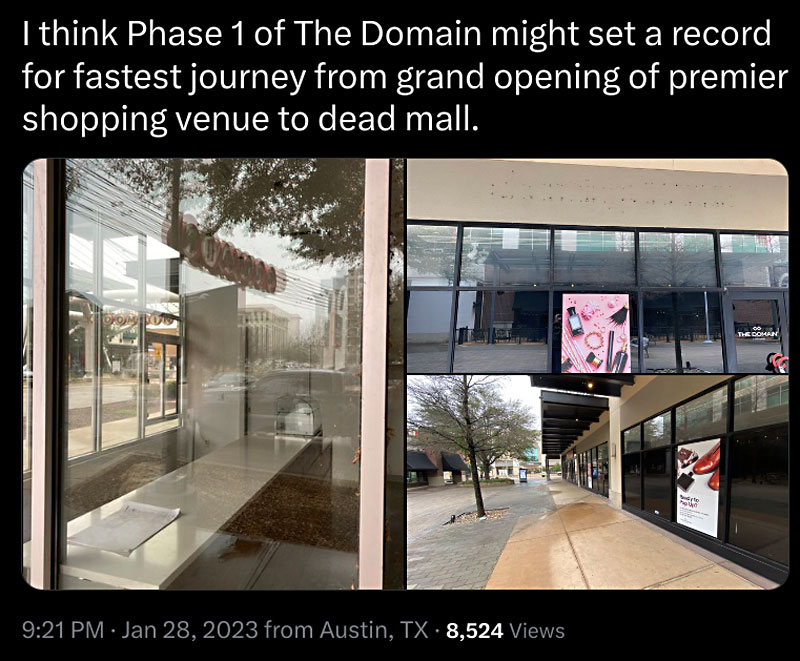Austin at Large: Canaries in the Shelter Line
Musicians are a useful proxy for the unmet housing needs in Austin neighborhoods
By Mike Clark-Madison, Fri., Feb. 3, 2023

The whole nation has a housing shortage, and Austin's is more acute because we grew so fast. Right now, almost all of that growth is happening outside the city limits, because Austin proper is full up. Watch us be officially stuck at just under 1 million people until we start building more housing units. (I don't know what happens when we reach 1 million; maybe a big bell rings. But where? And for whom?)
In the city, there's a rental vacancy rate of between 5% and 6%, and for owned homes it's less than 2%. Those figures have remained relatively stable even as the population has boomed and housing costs have skyrocketed. The Census Bureau already reports that Austin has more households than it has occupied housing units, so some people are doubling up. Others have simply been priced out of town. We report in this issue on the new Austin Music Census data showing a rapid outflow of musicians from Austin, and especially Central Austin, to San Marcos and Lockhart and Bastrop and such, fast becoming the live music capital's satellite venues. Now, Austin decided back in the 1990s that musicians are the city's official mascot, so it tries to protect them specifically, even though its ability to execute on what it's promised is not great.
How We Live in Busytown
But musicians make a pretty good proxy for the largely unmet housing needs of Austinites in so many neighborhoods. For the money they make playing music, most performers categorically can't afford to live near where they need to work for those parts of their job they can't do at home, like playing for paying audiences. Musicians have onerous commutes with their work gear, just as other tradespeople do, which Project Connect and a new I-35 and dozens of miles of new sidewalks probably won't do much to ameliorate. They work odd hours when they need mobility and other services to be robust, like all the time. They need a steady supply of electricity.
Musicians like to live near other musicians, just as many Austinites want to be in neighborhoods with people who share similar needs and lifestyles so they can help each other out and more gracefully age in place, which should be easier in Austin than it is, but not be segregated by class or color or credit score. Musicians want to live somewhere with places to practice, just as others may need places to cook or grow food or sell what they make. If your neighborhood (or your town, in the case of Lockhart or Bastrop) works for musicians, it probably has the bones to be functional and resilient for all kinds of residents.
Austin as a city still works for musicians, kinda, because of the scale and network effects that come with being a big city with a distinct industry ecosystem and a worldwide brand. (Austin's rapid ascent to major cityhood was probably good for that ecosystem.) But Austin's neighborhoods don't work for musicians anymore, especially the ones where the music scene took root and blossomed, unless those players are unusually successful or have lived there 40 years. Those folks can NIMBY just like everyone else, but they're also aging in place.
It's not just because those areas are too expensive; many are straitjacketed by the city's broke-down wreck of a land use code. That's why its Development Services Department has been a pile of old, burning tires smoldering in a landfill for the entire 35 years I've lived here – it literally cannot make sense of the code (which keeps changing) to make decisions on permits, site plans, and subdivisions. Also ever since I've been here, there have been generally ambitious plans to develop housing just for artists and musicians, preferably on publicly owned land, of which Austin has much. It hasn't yet happened.
From Model to Mandate
Such projects have been suggested for the big new neighborhoods planned since our boom began – Mueller, the Domain, South Shore, Rainey Street, etc. – which have been able to create a better balance of accommodation, access, and amenity. Of course they're now also expensive because they're oversubscribed. They also take longer to build because, to make those neighborhoods pop, people throw out Austin's busted land use rules and create new ones, which creates political resistance and drag. Their experience has not sent a huge signal to the real estate community to build more such places and put in the work it takes.
But if you could just write into a new code the basics of how to make functional, resilient, urban mixed-use neighborhoods – which is not that hard, it's not like we're building underwater – then, I believe, you will see fewer musicians abandoning their playing careers in Austin because of the housing shortage. Can we get nine Council votes for that?
You can also write in details of how to redevelop and repair those neighborhoods when the need arises, as it has begun to.
For example: You know that U.S. retail is screwed, right? Like, there's no way America needs this much real estate devoted to in-person shopping, but it's being allowed to age in place for lack of planning. Austin retail is not as overbuilt as in some markets, but witness the oldest part of the Domain (near Braker Lane) and Mueller's regional retail center (off 51st Street), both now vulnerable. I don't know what the Domain's planners thought about future reuse, but Mueller's planned and built the regional retail center so that when the day came that those places would be more valuable as housing (or offices, or mixed space), the conversion would be simple.
Got something to say on the subject? Send a letter to the editor.








